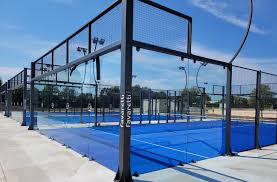

Exploring the World's Tennis and Padel Factories Craftsmanship Behind the Courts
In the realm of racquet sports, tennis and padel have captivated millions around the globe. As these sports continue to grow in popularity, so does the demand for high-quality equipment. Behind every successful tennis match or thrilling padel game lies an intricate web of manufacturing processes that produce rackets, balls, and accessories. In this article, we delve into the factories that bring these products to life, exploring their significance, production techniques, and the future of sporting goods manufacturing.
The Evolution of Tennis and Padel Equipment
To understand the current landscape of tennis and padel factories, it's essential to reflect on the evolution of equipment in these sports. Tennis, dating back to the late 19th century, has seen significant changes, particularly in the materials used for rackets. Early tennis rackets were made from wood, but advancements in technology have led to the development of composite materials that are lighter, more durable, and offer better performance. This evolution mirrors the journey of padel, a racquet sport that surged in popularity in the late 20th century, primarily in Spain and Latin America. Like tennis, padel rackets have transitioned from traditional materials to innovative composites designed for optimal play.
The Heart of Manufacturing A Closer Look at the Factories
Tennis and padel factories are often high-tech facilities equipped with cutting-edge machinery. The manufacturing process begins with the selection of raw materials, which can range from high-modulus carbon fiber to advanced resin systems. These materials are crucial in creating the lightweight and sturdy frames that players rely upon.
1. Racket Production The journey of a racket begins with the shaping of the frame. Factories employ precision tools to create molds that form the rackets' structure. After the frame is shaped, layers of composite materials are added, often featuring intricate designs that not only enhance aesthetics but also impact performance. Once the composite layers are set, the frame undergoes curing in ovens to ensure strength and durability.
2. Stringing Techniques Equally important is the stringing of rackets, which can dramatically influence a player's performance. Factories often employ experts who meticulously string each racket to the player's specifications, a process that requires both skill and precision. The development of synthetic strings has also revolutionized this aspect of racket customization.
3. Ball Production The production of tennis and padel balls is another complex process. Factories must maintain specific standards for bounce, weight, and durability. Using a combination of natural rubber and felt, manufacturers create a core that provides the perfect rebound. Each ball undergoes rigorous quality checks, ensuring it meets the standards set by international governing bodies.

The Role of Technology in Manufacturing
As technology advances, tennis and padel factories have embraced innovations that enhance efficiency and product quality. Automation plays a crucial role in streamlining production processes, reducing human error, and increasing output. Additionally, computer-aided design (CAD) allows manufacturers to create precise models of new products, enabling rapid prototyping and feedback from professional athletes.
Sustainability in Production
Amidst the technological advancements, a growing emphasis on sustainability is reshaping the production landscape. Many factories are adopting eco-friendly materials and processes to minimize their environmental impact. From using recycled materials in racket frames to implementing energy-efficient practices, the industry is moving towards a more sustainable future.
Future Trends in Tennis and Padel Manufacturing
The future of tennis and padel factories is poised for exciting developments. The integration of artificial intelligence (AI) and data analytics will enable manufacturers to fine-tune products based on player feedback and performance metrics. Additionally, custom manufacturing processes, where players can design their own rackets tailored to individual preferences, are becoming more commonplace.
Conclusion
Tennis and padel factories play a pivotal role in the growth and evolution of these beloved sports. The fusion of traditional craftsmanship and modern technology creates equipment that enhances player performance while also addressing the need for sustainability. As the popularity of tennis and padel continues to rise, so too does the significance of the factories that empower players with the tools they need to excel on the court. Whether you are an aspiring amateur or a seasoned professional, the legacy of these factories is an integral part of your sporting journey.
Premium Paddle Tennis Rackets for All Paddle Court Types
High-Quality Padel Court Solutions for Sports Facilities & Clubs
Premium Padel Courts: Custom Designs & Panoramic Views
Premium Paddle Racquet | High-Control Lightweight Design
NO.2 Panoramic Padel Orange Racket - Superior Grip & Durability
High-Performance Industrial Flooring Solutions China Paddle Tennis Court for Sale